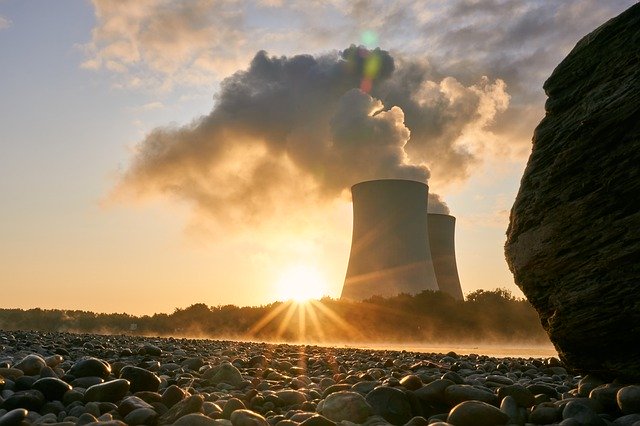
Image by Markus Distelrath from Pixabay
Despite policy support and market growth, the biggest hurdle to the growth of new nuclear is cost, according to a report by energy consultant Wood Mackenzie.
New nuclear generating sources like small modular reactors (SMRs) are among several technologies vying to deliver clean reliable power in future renewables-based electricity systems. Others include hydrogen-fired power, carbon capture and storage (CCS), geothermal and long-duration energy storage. All are expensive and need technological innovation to become stronger in the market.
According to Wood Mackenzie estimates, conventional nuclear power currently has a levelized cost of electricity (LCOE) of at least four times that of wind and solar.
In general, because of their relatively small physical footprints, reduced capital investment and more flexible siting, SMRs are viewed as an antidote to the cost overruns that have plagued large-scale conventional nuclear projects.
Wood Mackenzie’s modeling shows that if costs fall to $120 per megawatt hour (MWh) by 2030, SMRs will be competitive with nuclear pressurized water reactors (PWRs), gas and coal – both abated and unabated – in some regions of the world. Prices could fall further between 2040 and 2050 as SMRs realize economies of scale and improve market economics.
However, first of a kind (FOAK) SMR costs could be as high as $8,000 per kilowatt (kW) and as low as $6,000 per kW, according to industry estimates cited by WoodMac. Analysts there expect that FOAK costs will be at the high end of this range, and could be even higher, as developers build out early-stage projects.
At least 10 to 15 projects – with a capacity between 3,000 and 4,500 MW required for a standard 300MW SMR – need to be under development between 2030 and 2040 to support lower SMR costs, according to the firm’s analysis and policy estimates. The amount of FOAK SMR investment remains uncertain and will be influenced by multiple factors like financing terms, commodity costs, uranium availability and the political will to see projects succeed.
“The nuclear industry will have to address the cost challenge with urgency if it is to participate in the huge growth opportunity that low-carbon power presents. At current levels, the cost gap is just too great for nuclear to grow rapidly,” said David Brown, Director, Energy Transition Service at Wood Mackenzie, and lead author of the report.
Key actions needed
Wood Mackenzie points to four key aspects of expanding nuclear that need greater focus:
Policymakers need to set out clear rules for planning, permitting, regulation and safety. A middle ground around permitting timelines that allows public, industry, and government dialogue is needed to produce predictable timescales.
Expanding the uranium supply chain. Wood Mackenzie projects uranium demand to double under its base-case scenario and triple under its Paris-compliant Global Pledges Scenario. The firm says Russia’s invasion of Ukraine should be a wake-up call for the nuclear industry. Russia is currently a key supplier to both low and highly enriched uranium markets, especially to Eastern Europe and France.
Developers need to establish and refine their skillset. The expertise to build nuclear plants needs to be consistently re-applied and developers should priorities a few technologies rather than a wide array of options. This will result in greater cost savings and faster deployment over time.
Offtake agreements will need to be more creative than ever. Wood Mackenzie says buyers will need to place a value on nuclear’s ability to deliver stable zero-carbon power, zero-carbon process heat, nuclear-based renewable energy credits and power supply for low-carbon hydrogen. The cost of lowering carbon emissions via nuclear should be compared with other abatement options.